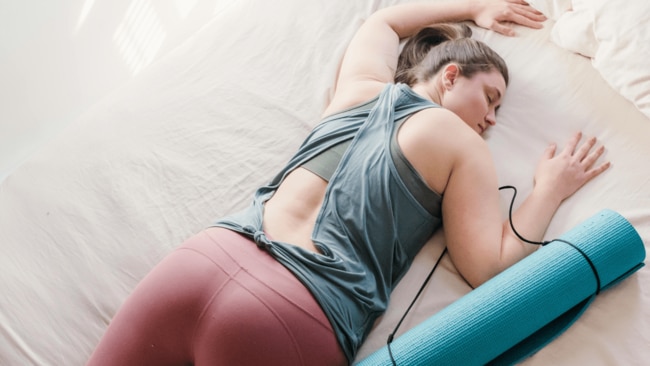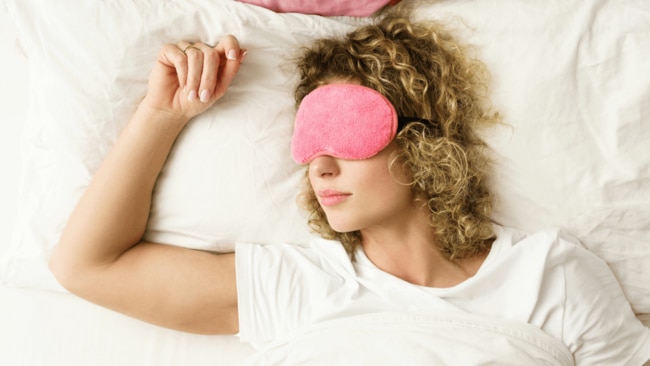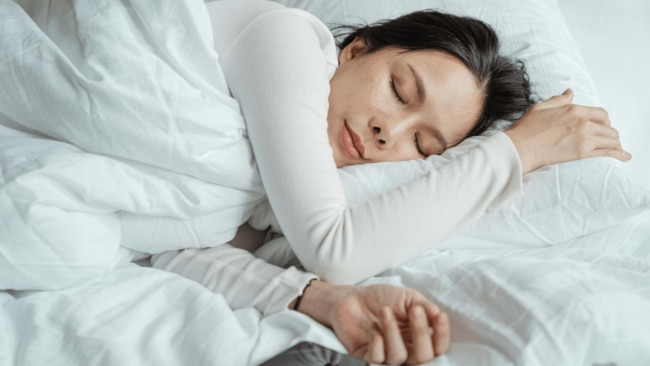Your sleeping position could be shortening your lifespan
Nightmare fuel
Lifestyle
Don't miss out on the headlines from Lifestyle. Followed categories will be added to My News.
According to experts, your sleeping habits and positions could be causing – or exacerbating – a range of health issues. Here’s what you need to know.
As a long-time side-sleeper, I was recently asked if I favour a certain direction by a skin therapist. She’d noticed slightly more congestion on one side of my face, a clear indication that I fall asleep, stay asleep and wake up without switching it up on my pillow.
It’s no secret our go-to sleeping positions say a lot about us. Where you drift off to sleep in a foetal position, a starfish or with the help of a big (or little) spoon, each and every one of us rests differently.
But as it turns out, your sleeping habits can impact far more than just your skin, according to experts.
As several studies have shown, back pain from an uncomfortable slumber is just the tip of the iceberg when it comes to sleep posture.
“Sleep positions can significantly affect your overall health, comfort, and the quality of your sleep,” explains physiotherapist and sleep expert Sammy Margo. “Each position has its pros and cons and understanding them can help you make adjustments for better sleep and health outcomes.”
“What you do in the day generally triggers the pain and discomfort that is felt when you sleep in certain positions,” adds sleep scientist Dr Kat Lederle. “One of the most common contributing factors to this is a sedentary lifestyle, so it is important to move regularly during the day.”

Here’s are the health implications of certain sleep positions
Front sleepers
Though there are certain pros to sleeping on you stomach – like reduced snoring and more open airways – it’s also the position most commonly linked to neck and back pain.
“Twisting your neck to the side puts strain on your neck, and stomach sleeping can also arch your spine,” explains Margo. “Direct pressure on the face can contribute to wrinkles over time.”
If you’re a front sleeper, experts advise the use of a thin pillow (or no pillow at all) to alleviate postural pain, and to place a pillow under the pelvis to help support the lower back.

Back sleepers
Anyone who lives with a snoring partner knows back sleeping can be a little tricky to live with – for anyone in the bed.
According to Lerderle, one of the most common (and problematic) conditions associated with back sleepers is sleep apnoea. This is where the soft tissue at the back of the throat relaxes during sleep, collapsing the airway and causing snoring or interrupted breathing.
As the expert says, sleep apnoea disrupts the continuity and quality of a person’s sleep, leading to tiredness, which can impact daily activities like work or driving.
“There are also physical health implications. We know that poor-quality sleep raises the risk of diabetes, heart disease and other comorbidities. Sleep apnoea opens the door to all these other conditions,” she says.
To counteract these issues, Margo suggests back sleepers rest in an elevated position, especially if chronic back or neck pain limits you from resorting to alternative positions, “The optimal position for spine alignment is lying on your back with a pillow under the knees to soften the back. This position preserves the natural contours of your spine. It can also minimise wrinkles.”

Side sleepers
Despite being the most popular sleeping position there is, experts say people could experience different health issues depending on whether they prefer the left or right side.
For pregnant women and people who suffer from acid reflux specifically, experts warn against sleeping on the right side, “This is because the stomach is lower than your oesophagus,” Margo says.
For those with heart conditions, however, the right side is the recommended sleep position, alleviating pressure on the heart due to gravity.
“Women with hourglass figures sleeping on a soft mattress will sink into a banana shape and that will cause a strain on the spine and hips, while men who side-sleep can tend to get more pain in their shoulders as they get older and their muscles weaken,” Margo says, adding that side sleeping, in general, can also cause wrinkles and breast sagging.
According to a 2022 study by Beijing Forestry University and Chenzhou Vocational Technical College examining how sleep quality is influenced by position, subjects without sleep disorders who prefer to sleep on their side will sleep better than those who like to sleep on their back.
The sleep experts recommend side sleepers use a thick pillow for optimum neck and spine alignment and place a pillow between your knees to support the hips and lessen lower back strain.
More Coverage
Originally published as Your sleeping position could be shortening your lifespan




